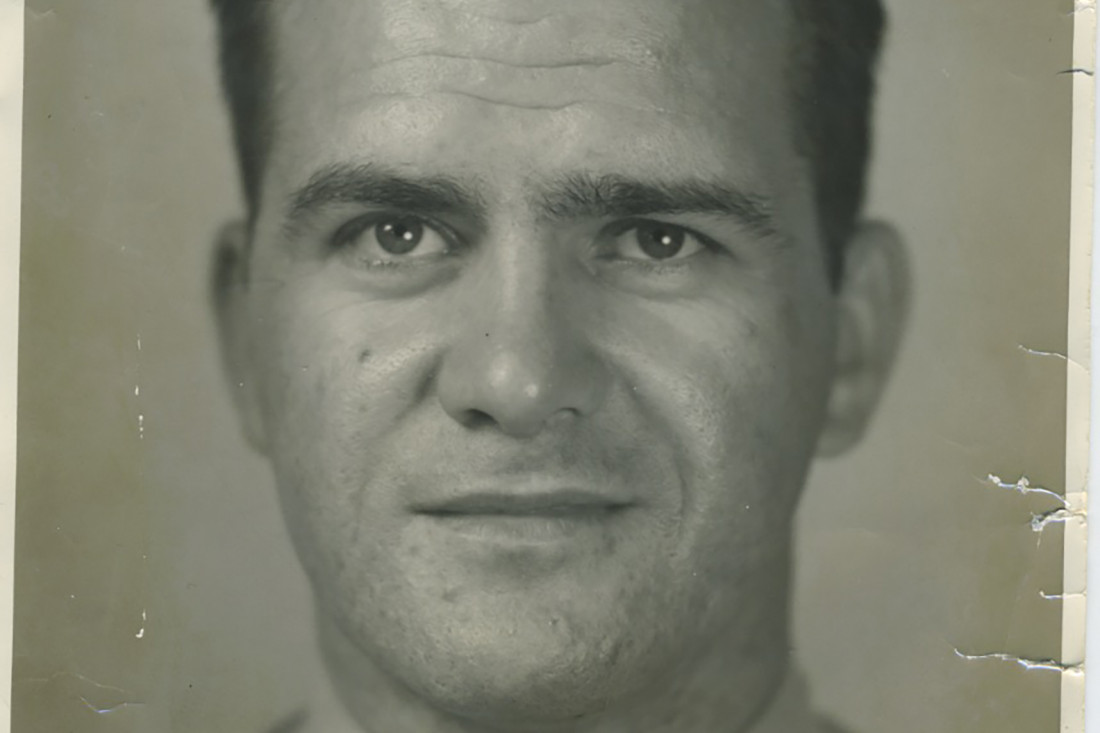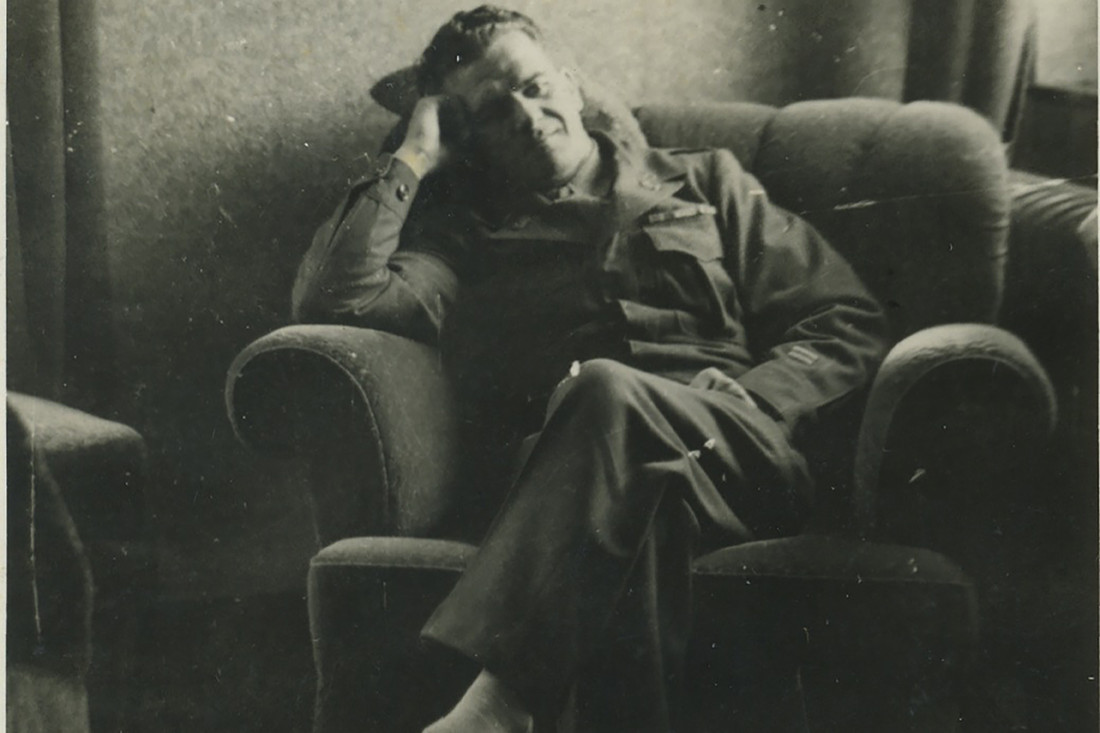Knights Collection
Articles & Resources
To access a set of three lesson plans written by SHU Professor Emeritus Dr. John Spurlock and related to the material within the Knights collection please click here.
Overview of the Harry B. Knights Collection
In the fall of 2019, retired FBI Special Agent James Knights approached the National Catholic Center for Holocaust Education with an intriguing proposal. In the years after his father’s death, Mr. Knights had lovingly safeguarded an extensive collection of photographs taken by his father Harry during his service in World War II, along with letters and other correspondence. He wondered if we would be interested in the collection, and suggested that we might want to preserve and share the material as part of our educational mission. We gratefully accepted his proposal.
The Knights Collection contains more than two hundred photographs and dozens of letters. The process of preserving, cataloguing and organizing the material has been a joint effort by our Center, the Seton Hill archives, and faculty and students from the Schools of Visual and Performing Arts and Humanities.
The heart of the collection is the series of photographs taken at Gardelegen, a German town that was the site of a terrible atrocity at the end of the war. As the Nazis were under pressure from the Allied invasion, they began to transfer prisoners from outlying regions into the heart of Germany. When a train carrying more than 1,000 prisoners broke down near the town of Gardelegen, prisoners were marched to a large barn and barricaded inside; the barn was then set on fire, killing nearly everyone.
One day later, Harry Knights and the rest of his troop (the 102nd Infantry Division) discovered the gruesome remains of this hideous crime. Harry was an avid amateur photographer, and quickly set to work documenting what he found. His photographs offer powerful testimony to Nazi criminality and their cruel desecration of human life.
Videos: Knights Collection Past Events
Friday, October 23rd, 2020 "Introduction to the Knights Collection: A Conversation with James Knights"
Discussing his father's legacy with Dr. Jim Paharik
Friday, October 30th, 2020 "The State of Art During WWII"
A discussion with Art Historian Maureen Kochanek with co-curators Phoebe Walczak and Hannah Vincent
Friday, November 6th, 2020 "Curator Docent Tour"
A tour of the Knights Collection with co-curators Phoebe Walczak and Hannah Vincent
Friday, November 13th, 2020 "The Death Marches and Gardelegen"
A Q&A with Historians Sarah Johnson and Jared Krol, Facilitated by Dr. John Spurlock
Friday, November 20th, 2020 "Start to Finish"

Harry Knights' Headshot.

Harry Knights reclining with a camera

Harry Knights (left) with Father James Glynn (right) met during their time in WWII and would remain friends in the decades that followed. Father Glynn was a key source of spiritual support for the troop.

Harry Knights (pictured here) was a member of the 102nd infantry division called The Ozarks, it was during his time in WWII with them that he would photograph the aftermath of the Gardelegen Massacre.

Excavated trench at Gardelegen, Germany.

Harry Knights, an American soldier, sits, posed for the camera.

Americn soldiers and German citizens work together to excavate and properly bury the 1,016 prisoners of war and political prisoners found dead at Gardelegen, Germany.

American soldier at Gardelegen killing site.

Bodies of victims of the Gardelegen massacre.